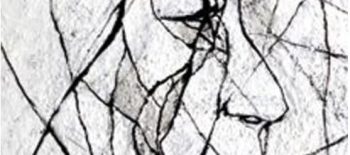She remembered her circumnavigation not only as an interesting chapter in her life, but also for its punishing days of hard physical labour. Despite many difficult and stressful situations, which including losing radio contact, suffering an attack of kidney stones, or wrestling with a 90 kg raft during a storm, she cherished fond memories of the beautiful landscape of Tahiti, the people encountered during her voyage, the pods of dolphins that often accompanied her boat, and the breakfasts of flying fish that jumped on board.
She had no fear about her solitary voyage. As she explained later, she didn’t have enough imagination to visualize what might happen to her during the cruise, so she remained calm. This peace of mind, however, owes more to careful preparation, though she later lamented failing to acquire the acrobatic and skating skills required to navigate the wet and slippery deck of a heaving yacht.
She departed the port of Las Palmas in the Canary Islands on March 28, 1976. She followed a course across the Atlantic, through the Panama Canal, across the Pacific Ocean, then around Australia and Africa. Two years and many adventures later, on March 20, 1978, Chojnowska-Liskiewicz completed her circumnavigation of Earth near Cape Verde, having sailed 28,696 nautical miles alone. Her achievement was listed in the Guinness Book of Records.
She was born in 1936 in Warsaw. The experiences of World War II eventually brought her family to Ostróda. In this small Masurian town, little Krystyna discovered Poland’s great lakes and learned how to sail. She channeled her passion for sailing into studies at the Gdańsk University of Technology‘s Shipbuilding Faculty. When asked about the reasons for choosing such an unusual specialization for a woman, she replied: ‘I was good at mathematics and physics and I liked ships‘. At university, she met her future husband – the outstanding boatwright and designer, Wacław
Liskiewicz. It was he who designed the Mazurek, the 31-foot sloop which Krystyna sailed around the world.
After graduation, she got a job at the Gdańsk Shipyard, where she worked on ship design and construction. She obtained competency certificates as a day skipper, a coastal skipper and, in 1966, a Master Mariner. Before the journey of her life, she made many shorter, but still ambitious cruises. It was this educational background and experience that led the Polish Sailing Association to select her in 1975 for the single-handed voyage around the world.
Does she have any regrets? She never had an opportunity for space travel, which is the only thing that she envies future generations.




